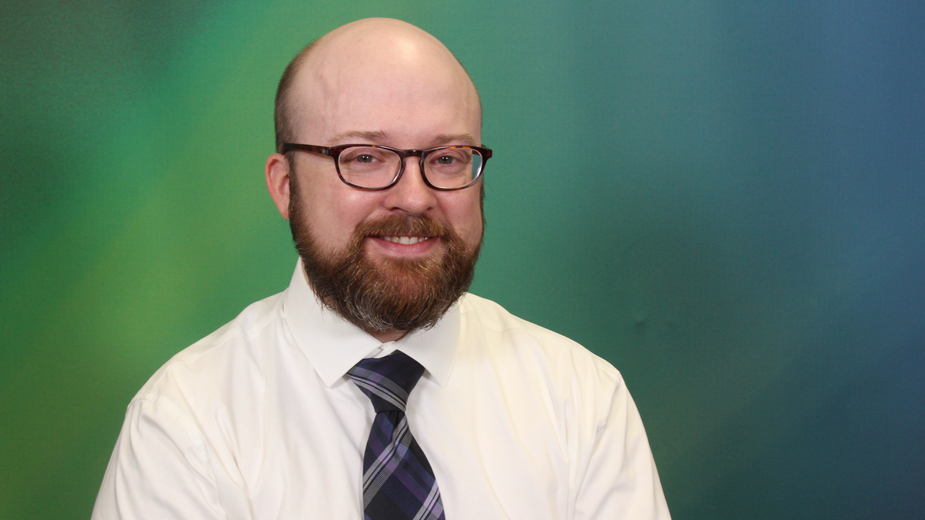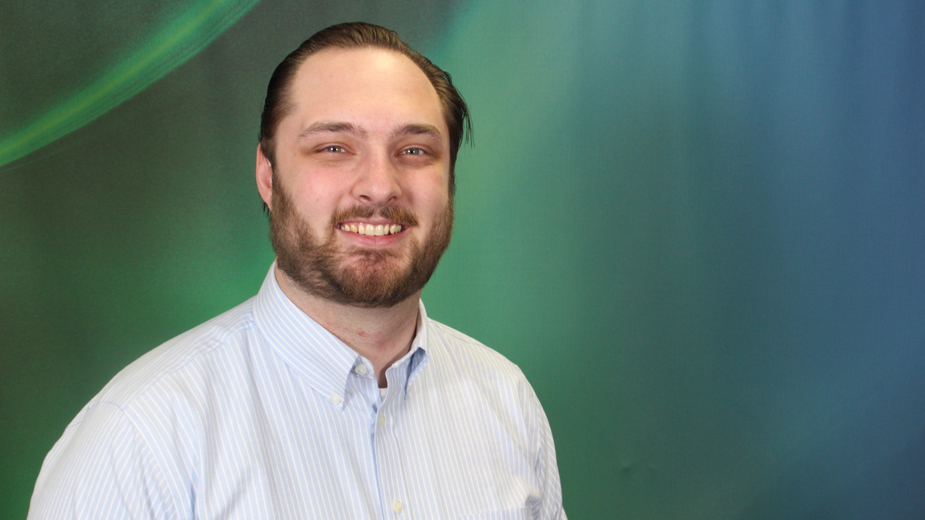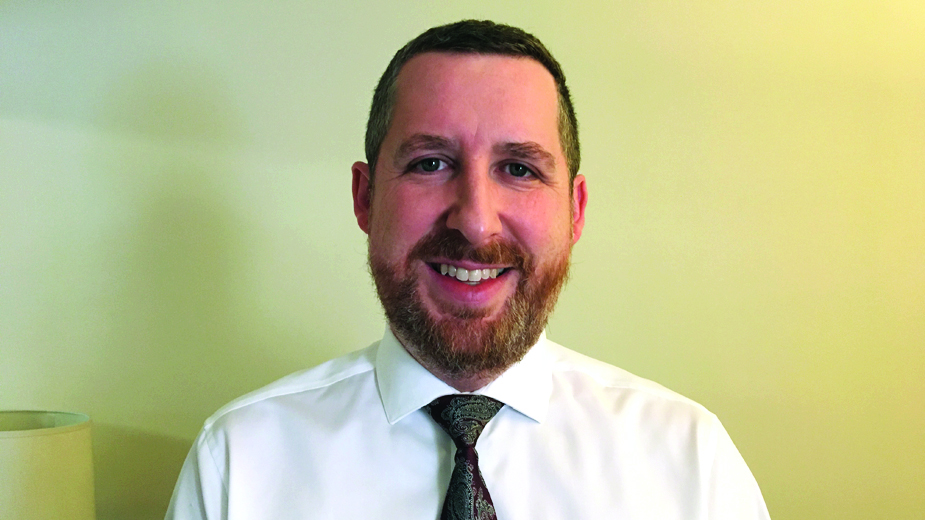Mike Moliterno: Video Production Team Keeps at a Social Distance
On Jan. 31, 2020, The Business Journal video department created a video that proved prophetic of the new year.
January is always a busy month as the staff edits and curates the hundreds of submissions we receive for our biggest issue of the year, the Growth Report. The video was meant to show how taxing the process is on our staff.
As inspiration, we made a parody of a 2019 film, “The Lighthouse,” about two lighthouse keepers who become marooned alone on a desolate rock. Trapped, with no hope of rescue in sight, tempers flair and the two men slowly go mad.
Today it seems ironic that what was meant to be a celebration of the conclusion of one of the busiest times of the year turned into an exaggerated preview of the year to come.
In early 2020, the video department was busy wrapping up our student panels for our Brain Gain program. A couple times each week, we would go to a middle school or high school and convene a roundtable with anywhere from six to 20 students.
To capture all of the audio and video, we invested in new equipment, including cameras, microphones and a mixing board. By March, however, most of what we purchased would be mothballed.
On Friday, March 13th, the city of Youngstown and local health officials held a press conference inside the Covelli Centre.
Their message: “Don’t take a risk.”
Looking back on the video footage of that day, what strikes me is seeing a room full of people, not wearing masks, standing close together.
By the following week, the video department was working from home. One of our employees was denied entry to a press event because of a high temperature. Thankfully, he tested negative for COVID-19.
Still, we quickly realized we had to address a new set of challenges. How do we interview people when we can’t get near them? And how do we create daily content when all of the events are canceled and everyone is limiting the people they allow inside their businesses?
Our staff got creative.
Maggie Young, who hosts our arts and entertainment After Hours Report, suddenly found herself without content. She began curating all the virtual events and demonstrating ways to beat boredom, such as cooking dishes published in the Recipes of Youngstown Cookbook.
On the Daily Buzz, we pivoted from doing long-form, feature-type stories to more of a news-based format.
We also started sitting in on Gov. Mike DeWine’s daily updates and then going live on Facebook to notify the public of the highlights.
Again, we had to purchase new equipment.
Gone were the days when a videographer could stand next to the camera and pass the microphone back and forth. Now we set the microphone on a stand, connect it to the camera with a long cable and conduct the interview from six to 12 feet back.
By late June, we were back in the office and the department, like the public, was getting accustomed to the new reality. More and more events were being held virtually, which meant the number of events we could cover began to pick up, though now we were covering them from our office.
Being an election year, our staff is always prepared for an acceleration of activity as November nears.
To ensure everyone had an equal opportunity to get in on the fun, we randomly drew names to create a list, then placed a red Star Trek T-shirt next to the first name.
If you had the shirt next to your name you were on deck for whatever unexpected election event needed to be covered. Once you fulfill your duty, the shirt moves to the next name.
This year the shirt was used only once, when Ivanka Trump visited the Mahoning County Career and Technical Center on a Saturday.
By the time the election was in full swing, the Daily Buzz had fully transitioned to a newscast format. We were able to create compelling (we hope), informative daily content by leveraging the stories produced by our reporters.
As we head into 2021, the video crew is eager for the opportunity to get back in the field and cover the growth of businesses in our region.
They, like us, have stories to tell about how they navigated 2020 and what they have planned for the future.
Here’s to 2021!
Jeremy Lydic: Reporting Practices Adapt In 2020 to ‘New Reality’
In the film “The Way of the Gun,” Mr. Parker, played by Ryan Phillippe says, “I think a plan is just a list of things that don’t happen.”

Though that statement might seem cynical in a typical year, it’s rather apt for 2020. As the coronavirus became very real imposed its presence in February and March, it upended the plans of businesses, schools and manufacturers.
Downtown Youngstown became desolate. And from mid-March to June, I found myself working at my dining room table.
2020 was the first full year of our Brain Gain editorial initiative. To build off the momentum from October 2019, we were planning to convene a public conversation at Stambaugh Auditorium in May. It would have been the public version of the roundtables I had been leading with students since January. In those few, short months, I spoke with more than 120 middle and high school students, gaining candid insights into their interests and aspirations.
For the Stambaugh event, we had lined up smaller panel discussions with leaders in workforce development and a featured roundtable with some of the students I had spoken to, moderated by U.S. Rep. Tim Ryan.
But as schools closed, our plans for the event and additional roundtables with college students and young professionals were postponed.
While we had no intention of stopping Brain Gain, the pandemic changed the conversation. Nearly all interviews with school administrators – held via Zoom or on the phone – focused on how to make workforce education work during the pandemic. I am thankful to those who made time during unprecedented uncertainty to discuss their plans. I’ve continued to rely on many of these contacts as I’ve pursued Brain Gain stories.
And the pandemic didn’t stop organizations like the Mahoning Valley Manufacturers Coalition and Junior Achievement of Mahoning Valley from bringing career exploration opportunities to students.
In November, Junior Achievement’s JA Inspire event saw some 7,000 Mahoning and Trumbull County students register to attend. I spent most of the morning and early afternoon exploring the virtual lobby and listening to the speakers deliver 30-minute presentations in the “auditorium.”
While informative, getting student reaction was more challenging than at live events. That day, I spoke with Beaver Local High School seniors Colton Dugan and Payne Allen via Zoom. Dugan and Allen enjoyed the program. Their guidance counselor, Bethanne Rettos, said that without JA Inspire, the seniors wouldn’t have much else by way of career exploration.
“This is one of the very first things that we’ve been able to do because most things we haven’t figured out how to do remotely yet,” Rettos said.
Adopting to new technology has become routine in journalism these days. But 2020 provided an education beyond technology.
Covering Gov. Mike DeWine’s directives to stem the spread of COVID-19 expanded my regional perspective and gave me a crash course in public health. Keeping up with health orders and trends, understanding the difference between PCR and antigen tests and getting familiar with everything happening to “flatten the curve” was key to keeping readers up-to-date.
That experience informed the stories as I identified how local businesses adapted. While some on social media were critical of our attention to the pandemic – and of the press in general – I believe the stories written over the last year served a purpose.
Reports on the struggles of area businesses hardest hit by the pandemic were among the hardest to write. After so many years reporting on these businesses, you come to know the owners as neighbors and, in some cases, friends.
Relating their frustrations and fears over potentially losing their livelihoods made the work challenging on a personal level. But it was also an opportunity to inform readers on how to support local businesses.
Covering the pandemic provided the public with important information and shone a light on the critical role public health plays on our economy.
That prompted our first public health roundtable (See pages 34-41), held in December. Moderating the conversation was another new challenge. But as I continue to connect public health and education, our local economy and the workforce, I’m eager to keep the conversation going.
Josh Medore: PPP Brings Mad Rush To Reporter
The launch of the Paycheck Protection Program kicked off a weeks-long mad scramble. Certainly, it wasn’t as chaotic as what bankers and lenders had to deal with. But it still upended my beats.

Before the pandemic, I had primarily covered health care and the automotive industries. I stepped in to cover banking and finance when needed but I wasn’t entirely fluent. I could write up quarterly earnings reports and could talk to accountants about planning for retirement or a business making the transition to new owners. But that reporting still took a lot of research and the feeling that I had gotten something wrong never went away.
So when the Cares Act was signed into law March 27 with $349 billion available – later upped to $669 billion – through the Paycheck Protection Program, my first thought was that I’d be in over my head.
Like the bankers and accountants helping clients to fill out their applications, I was trying to keep up with the constant changes in rules from the SBA. It was vastly different from the reporting I was used to. Before shifting to covering the pandemic and its impacts, I was working on a story about the state of health care in the Mahoning Valley. I was digging through reports from local health departments, talking to hospital leaders and health commissioners, and researching what could be done to improve health. All of it was based on things people already knew about.
Pivoting to cover PPP was the complete opposite. While everyone knew the general outline of the program and what was needed, the details were constantly shifting. Until the SBA announced the first allotment of funding had been accounted for, everything was up in the air. After that, things settled down and the rules became clearer. The mad rush was over. While the first $349 billion had been claimed in two weeks, the second phase of PPP money would last until August.
Mixed in with trying to understand the Paycheck Protection Program was adjusting to new ways of reporting. . As I interviewed – by phone, Zoom chats or text – people who were involved in the program it was obvious that they were busier than ever. Night and weekend shifts were routine.
Among all that work and confusion, the people I reached out to almost always took the time to talk. It would have been easy to cast my voicemails and emails aside as something to deal with later or pretend they never saw. But everyone was focused on making sure that businesspeople – regardless of whether they were clients – knew what was going on.
Over the summer, after the initial rush faded, I’d occasionally revisit the PPP, looking for updates, rule changes and trying to piece together a local picture of the lending program. The latter was difficult as companies were reticent to discuss how much they had gotten and banks only disclosed totals. That changed in early December when the SBA released data detailing every loan awarded.
The information came in six spreadsheets bigger than anything I had ever dealt with. One, listing only loans above $150,000, had 660,504 entries. The information on loans under that amount were split into five files, each with about 900,000 entries. I spent 2½ days sorting through the lists and writing stories.
Now, with a second phase of Paycheck Protection Program funding in the new relief bill, we’re set to do it all again. This time around, the program should have more rules about who can get money and how much. With everything laid out beforehand and less urgency, it ought to be a bit calmer than the first time around.
George Nelson: Presidential Candidates Go Missing
In a presidential election year, normally the Mahoning Valley would be deluged with visits by the Democratic and Republican presidential candidates and their surrogates. The lead-up to the primaries and general election pack the Covelli Centre and hangars at the Youngstown-Warren Regional Airport as thousands of supporters gather at campaign events.

Not so in 2020; even the Canfield Fair was canceled. Four years earlier, thousands of supporters stood at the county fairgrounds in scorching Labor Day heat to catch a glimpse of then presidential candidate Donald Trump. A few days earlier, Joe Biden, the man who would defeat Trump in 2020, paid a visit to shake hands while campaigning for Hillary Clinton.
Trump and Biden appeared in person for the first presidential debate, Sept. 29 in Cleveland. But even there, local press availability was restricted.
Biden did stop by Alliance as he traveled by train from the debate. His wife, Jill Biden, visited the farm of a supporter in Volant, Pa., the day before Election Day. Again, both events had limited capacity and press availability.
Though not an official campaign event, Vice President Mike Pence was the featured guest June 25 at the unveiling of the Endurance pickup truck at Lordstown Motors Corp.
The president did no in-person campaigning in the Mahoning Valley, but his two eldest children, Donald Trump Jr. and Ivanka Trump, did stop here the week before the election.
Social distancing was basically ignored at both events, and those attending largely followed the president’s example by flouting mask guidance.
The conditions prompted our staff covering the events to upgrade to N95 masks for better protection. Additionally, I gained a new appreciation for what my wife, a nurse, has to endure during her 12-hour shifts.
The pandemic radically changed how meetings of various public bodies are covered. Whereas those previously could only be covered in person, officials soon went to virtual meetings, authorized by a new state law permitting that.
It’s an approach that has advantages and disadvantages.
Being able to cover a meeting from the office (or anywhere that the meeting can be accessed virtually) means less travel time But virtual meetings often lack an option for asking follow-up questions, which can be a challenge when public officials are unable – or choose not – to respond to inquiries right away, if at all.
Many public employees still are working remotely as well, complicating the ability to get comments or information.
There has been loosening of restrictions, with some government and quasi-government organizations now permitting media to attend meetings in person.
This probably will increase as vaccine distribution becomes more widespread. Still, remote coverage probably will continue to be the norm for some time.
This year, I also participated in Your Voice Ohio, a collaboration of 50-plus news organizations statewide that combined resources to take a different approach to cover the election.
We held virtual meetings with volunteers around Ohio to get their insights on the election, the candidates, the issues and how all of the above were being reflected in the media they see every day.
Stories were prepared based on that input and other information gathered by the news organizations and journalists.
That collaboration continues as we share resources moving forward.
Pictured at top: Mike Moliterno, vice president of operations at The Business Journal.
